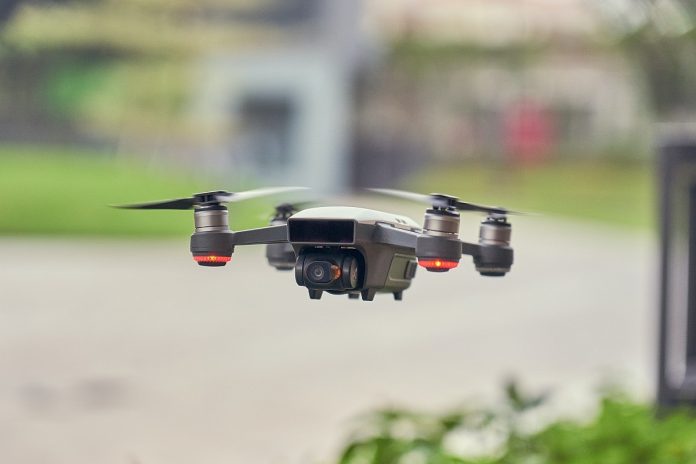A small plane appeared from the blue sky above a Texas home, deposited its payload of mid-morning snacks on the patio, and zoomed off as drone delivery became a reality in America.
Flying shipments of pizza and birthday gifts have not yet become the norm that technology leaders predicted, but the service is available in parts of the United States and is catching up with government regulation.
Skeptics question whether drone drop-offs could ever work on a large scale, but backers argue they’re safer and better for the planet than hulking, greenhouse-gas-spewing delivery trucks — and faster.
The parcel was dropped by an electric drone at Tiffany Bokhari’s home in Frisco, Texas, minutes after she placed the order on a smartphone app.
“On the soda, you can even see condensation on it because it’s still cold,” she told AFP after the drone of the Alphabet-owned wing flew by.
The service was new to the area and remained small-scale, but Wing compared up to 1,000 deliveries per day in just one part of the Brisbane metro area in Australia.
Blood and tooth brushing
A handful of companies are already operating in Texas, North Carolina or parts of California or have providers, including Israeli startup Flytrex, Wing and e-commerce behemoth Amazon, by the end of the year.
In fact, Amazon founder Jeff Bezos unveiled delivery drones in a 2013 CBS interview, predicting that within five years airborne shipments would be routinely zipping from fulfillment centers to customers’ doorsteps.
Things haven’t gone that way for the company, which has become ubiquitous in aspects of modern life, from streaming and food shopping to health care.
When an Amazon delivery drone crashed during testing last year and started a brush fire, the company’s faltering drone ambitions suffered another setback.
Work has progressed more steadily for others, and in April, Wing announced the “first commercial drone delivery service” in a major US metro area: Dallas-Fort Worth, Texas.
Wing, which also offers delivery to parts of Australia and Finland, has a weight limit of 2.5-3 pounds (just over a kilo).
“A whole roast chicken…it’s a really good sight for the size that’s right,” said Jonathan Bass, Wing’s head of marketing and communications.
Take-out food, prescriptions and household items such as toothbrushes are the types of small and light products that work for airdrops, although drones have delivered essential items such as medical supplies in parts of Africa for years.
Drone drop-offs of perishable items like blood make sense in places where infrastructure is lacking and air transport is the best option, though some experts doubt whether it works everywhere.
Government regulations
For example, a drone can typically make a delivery from a warehouse or store to a single location, which means a huge reduction in efficiency compared to old-fashioned parcel delivery drivers.
“It would take a small army of drones to serve 150-200 packages,” wrote Bloomberg Opinion columnist Thomas Black, with “premium” emergency delivery capabilities.
But Flytrex CEO Yariv Bash asserts that electric drones are safer, in addition to being more efficient, than delivering take-out food via fossil fuel-powered cars.
“Drones don’t get tired. They don’t try to text while driving. They don’t drink and drive,” he told AFP. “You get very good service.”
The issue of security is at the heart of the lengthy process of obtaining government approval to operate in the United States.
Bass at Wing noted that even though it uses a 10-pound foam drone, the company would have to get the same certification that companies like DHL or UPS require for their delivery aircraft.
But he noted that the Federal Aviation Administration transport regulator has launched a committee that has made recommendations for regulating drones in the United States, adding: “I think that will unlock really fast growth”.
The increase in the United States would not be surprising, as the global number of commercial deliveries in 2018 rose from 6,000 to nearly half a million last year, according to McKinsey & Company figures.
“But the path forward is still unclear,” the firm said in a March report. “Regulations, consumer acceptance and costs will all determine whether the industry reaches its potential.”












